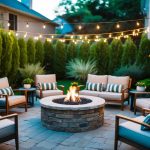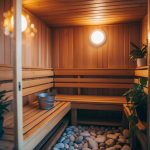Basement Makeovers: DIY Waterproofing Solutions for a Dry, Cozy Space
Interior vs. Exterior Waterproofing Solutions
Homeowners have two primary options for waterproofing a basement: interior and exterior solutions. Each approach offers distinct methods and tools tailored to manage water challenges effectively.
Internal System Approaches
Interior waterproofing focuses on managing water that enters a basement. A common internal method is a perimeter drainage system that collects water seeping through walls and directs it to a sump pump. The water is then pumped out of the home, keeping the basement dry.
Sealants and coatings are often applied to walls and floors, especially over potential leakage points. They form a moisture barrier, preventing minor dampness issues. While this method doesn’t stop water from penetrating the external walls, it efficiently controls water once inside.
External Waterproofing Methods
Exterior waterproofing aims to prevent water from entering a basement in the first place. This comprehensive approach involves excavating the soil around the foundation and applying a waterproof barrier directly to the outside walls. This helps stop water penetration at the source.
Further measures include installing drainage systems at the base of foundation walls to direct water away. This method can sometimes involve significant labor and cost but is effective in addressing issues long-term. Protecting the home’s foundation from water infiltration enhances structural integrity and prevents future water damage.
Preventing Mold and Mildew Growth
Mold and mildew thrive in damp, dark environments, making basements particularly susceptible. Keeping these areas dry and well-ventilated can minimize their growth. One effective method is using a dehumidifier. Placing a dehumidifier in the basement reduces moisture levels, creating an environment less conducive to mold and mildew.
Another important step is to ensure proper ventilation. Installing vents or exhaust fans helps circulate air and decrease humidity. This reduces musty smells commonly associated with mold and mildew. Regularly checking and maintaining these systems ensures ongoing effectiveness in preventing allergen build-up.
Checking for leaks is crucial in preventing mold growth. Water from leaks can provide the moisture mold needs. Regularly inspect pipes, windows, and walls for any signs of water infiltration. Promptly repairing any issues is essential in maintaining a dry basement environment.
Applying mold-resistant paint on walls and ceilings can also add an extra layer of protection. These paints contain properties designed to thwart mold growth, making them a useful tool in comprehensive waterproofing strategies. Regular cleaning further reduces the likelihood of spores settling and proliferating.
Removing excess moisture and ensuring proper airflow in the basement are practical steps in creating a mold-free environment. Regular maintenance and vigilance in identifying potential problem areas contribute significantly to the efficacy of DIY waterproofing solutions.



